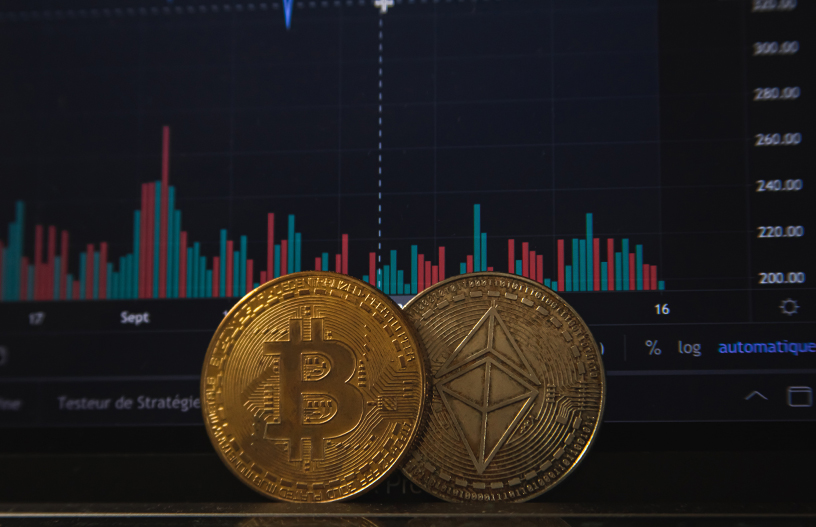Imperial College London and FluidAI Announce Groundbreaking AI Partnership! Read here 🤝

Macro & Crypto Markets Newsletter
Cryptocurrencies are known for their volatile nature, and as a result, crypto winters are not unusual. For example, in April 2013, bitcoin rallied to a high of $230 from just $13, only to drop 70% to $68 in a few days.

Macro & Crypto Markets Newsletter
Summary:
- The Federal Reserve System (FED) is increasing interest rates in March to slow the economy and combat inflation.
- The Fed is looking to issue a Central Bank Digital Currency (CBDC) or a digital dollar – NOT a cryptocurrency.
- More than $700 million of liquidations in crypto as markets plunged and the price of BTC dropped below $40,000.
- Record number of individual and institutional investors are moving money out of crypto to safeguard their financial positions
Cryptocurrencies are known for their volatile nature, and as a result, crypto winters are not unusual. For example, in April 2013, bitcoin rallied to a high of $230 from just $13, only to drop 70% to $68 in a few days.
Similarly, the last crypto bull run in 2017-2018 was almost identical – a quick price jump followed by a steep reduction in the subsequent weeks.
And in 2022 crypto is on a downward spiral once again. According to charts by CoinGecko, cryptocurrency market capitalization has plummeted from a high of $2.3 trillion in late December 2021 to $1.76 trillion as of Monday, January 31, 2022, representing a 30% decline in just three weeks.
Nearly $700 billion of value has been erased with Bitcoin (BTC) slumping 28% year to date and Ethereum (ETH) falling 40%.
Analysts blame the new covid variant (Omicron), rampant inflation, a decline in international stocks, and concerns over further crypto regulation for the current downturn.
To add to the woes, inflation has been on the rise in the largest economies over the past few months and markets are bracing for a freeze on all potentially risky investment vehicles.
Federal Reserve Chairman Jerome Powell released a statement saying the Federal Reserve System (FED) will increase interest rates by March to rein in the economy and combat inflation. The announcement triggered a self-reinforcing cycle, resulting in significant liquidation events.

Figure 1: SP500 vs Nasdaq
Source: Tradingview
Impact on Wider Markets
This month, the American broad market equity indices saw a steep decline, driven by the Fed’s rising expectation to begin extracting liquidity from credit markets.
Higher interest rates have discouraged risk-taking and tech has felt the weight of these expectations more than most due to their lofty valuations in the stock market. Tesla tumbled 6.8%, Microsoft slid 4.2%, Amazon dropped 2.4%, while Apple and Google fell about 2% each.

Figure 2: Nasdaq
Source: Tradingview
Take the Ark Innovation ETF for example: It holds some of the most exciting yet expensive assets that can be bought but unfortunately, the market won’t tolerate the risk of having pre-revenue assets due to the unpredictability associated with the Fed raising interest rates.

Figure 3: Ark Innovation ETF vs Nasdaq
Source: Tradingview
With the sheer quantum of excessive liquidity introduced by tense investors nervous at how the best bets of the Covid-19 period were starting to unravel, the Fed has more than doubled its balance sheet since August of 2019.
In short, ‘stay-at-home’ heroes such as Zoom (-74,08%), Peloton (-83,77%), and Gamestop (-69,53%) are trading way below their previous all-time highs and witnessing massive sell-offs.
Cryptocurrency has by no means remained unaffected by broader de-risking of equity markets.
Cryptocurrency Markets are Massively Bearish
In a single day, more than $700 million of liquidations in crypto were recorded as markets plunged and the price of BTC dropped below $40,000 (a price considered a stable position).

Figure 4: Bitcoin
Source: Tradingview
Before we dive into what these liquidations mean for bitcoin, here’s an overview: First, Bitcoin is an apolitical settlement system for a non-discretionary form of money called BTC. Second, BTC’s supply is inelastic, meaning no changes in demand for bitcoin can change the rate of bitcoin supply growth capped at 21 million tokens. This decentralization makes BTC a unique asset in a world of central bank discretionary policy.
Why are Rising Interests Causing Crypto Sell-offs?
Crypto assets, such as Bitcoin, do not have excess inflation as they have a limited supply. However, they lack the three functions a monetary regime should conform to:
- The ability to respond flexibly and smoothly to temporary shocks of demand.
- Protection against structural deflation introduced by limited supply.
- Incapacity to function as a lender of last resort for financial institutions during times of crises.
Therefore, much of crypto’s sell-off can be attributed to the correction of speculative stocks and other traditional assets which have sworn in margin calls and liquidations, both in the conventional world of investments and in crypto.
During a market downturn, it can mean a lesser amount of money for people to make bets with on the crypto market.
An explanation for this could be that most investors have been treating crypto similar to gold. In it for the long-term, investors are gambling now to receive payoffs later.
Rising interest rates, however, could make cryptocurrencies behave more like tech stocks on the NASDAQ and less like long-term bets. As the markets go sour a record number of individual and institutional investors are choosing to move their money out of crypto and safeguard their financial positions.
Crypto Adoption at an All-Time High
With Bitcoin still functioning as it was designed to, many more projects are adapted and finding product-market fit with decentralized technologies. Additionally, a record number of investors and institutions are joining crypto every week, to not speculate, but to take advantage of the new digital revolution.
Last week alone, Coinbase, one of the largest crypto exchanges, confirmed a strategic partnership with Mastercard to allow Coinbase users to purchase NFTs with their debit or credit cards.
Walmart also signalled its intention to utilize blockchain technology as part of a long-term strategy by filing three separate patents with the USPTO.
Microsoft wasn’t left behind either, acquiring Activision Blizzard for $68B to make their transition into the metaverse as seamless as possible.
Will the Fed Introduce a Digital Dollar?
A significant talking point from the Federal Reserve Chairman’s announcement was that the Fed was considering issuing a Central Bank Digital Currency (CBDC) or a digital dollar. According to available documents, it would seem likely to be a digital format of dollars and not a cryptocurrency or a Stablecoin. And while its form and exact functions are undecided, Fed advocates expect it to serve the unbanked and make it easier to distribute cash to people in times of a financial crisis.

Figure 5: Federal Reserve Balance Sheet
Source: FRED
The Chinese government has already implemented this concept. A couple of years ago, it developed a digital currency called e-CNY to facilitate the use of Chinese yuan in domestic and international transactions.
As a result, the Chinese yuan became the world’s third largest reserve currency recently partly because of this system.
What Does the Most Recent Correction Mean?

Figure 6: Bitcoin Price vs Effective Fed Fund Rate
Source: Tradingview
In 2017, crypto had its most fantastic bull run while the Federal Reserve increased rates. Though the ‘pressure to sell’ for investors remains high, Bitcoin’s current price correction could lead to a price ascension, especially considering this is the seventh-time Bitcoin has corrected over 20% in thirteen months.

Figure 7: Reserve Risk
Source: Glassnode
Reserve Risk, a metric created by Hans Hauge and popularized by Glassnode – a blockchain data and intelligence firm – indicates the risk-reward sentiment of its long-term holders. This metric presently encourages people to buy, considering the price of Bitcoin, at a discount.

Figure 8: MVRV
Source: Glassnode
Dormancy Flow is another metric that signals selling pressure from new industry entrants who seem to be on an information paralysis. Bitcoin’s non-discretionary money supply is a powerful feature when convenient and conversely, a costly tool of speculation.

Figure 9: Entity Adjusted Dormancy Flow
Source: Glassnode
Closing Thoughts on What The Future Holds
Due to a lack of investor confidence, it could take some time before markets are bullish again.
Considering that more and more investors are adding digital assets to their balance sheets, crypto markets have become increasingly correlated to equities. Hence, the Fed’s state of affairs means all eyes remain fixed on March’s ‘rate increase’ for a clearer picture of market sentiment and behavior.
DISCLAIMER – NO FINANCIAL ADVICE:
The information on this website, FLUID.finance, is a point of view provided for educational and informational purposes only, without any express or implied warranty of any kind, including warranties of accuracy, completeness, or fitness for any particular purpose.
The information contained in or provided from or through this website is not intended to be and does not constitute financial advice, investment advice, trading advice, or any other advice.
The information on this website and provided from or through this website is general in nature and is not specific to you the user or anyone else. You should not make any decision, financial, investment, trading or otherwise, based on any of the information presented on this website without undertaking independent due diligence and consultation with a professional broker or financial advisory.
You understand that you are using any and all information available on or through this website at your own risk. Read more about your own risk here.
Take part in the FLUID Retweet reward for more tickets!













